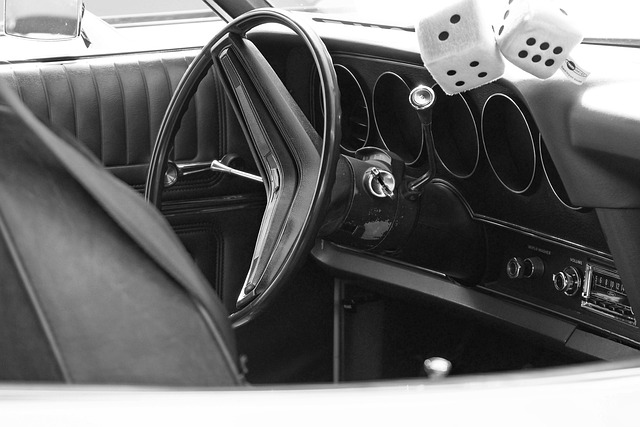Looking to register your car in California? This comprehensive guide will walk you through the process step-by-step. In California, car registration is a legal requirement for all vehicle owners. To start, understand the state’s specific requirements and gather essential documents. Next, visit your local DMV office or use online services for convenience. Ensure accurate verification of your Vehicle Identification Number (VIN) using a trusted dmv vin verifier. Finally, pay the registration fees and receive your Certificate of Registration.
- Understand California Car Registration Requirements
- Gather Necessary Documents for Car Registration
- Visit Your Local DMV Office or Use Online Services
- Complete Vehicle Identification Number (VIN) Verification
- Pay Registration Fees and Receive Your Certificate of Registration
Understand California Car Registration Requirements

Before registering your car in California, it’s crucial to understand the state’s specific requirements. The California Department of Motor Vehicles (DMV) mandates several steps for vehicle registration, including a thorough inspection to ensure safety and compliance with emission standards. One essential tool in this process is a reliable Vehicle Identification Number (VIN) verifier. The DMV utilizes VIN verifiers to cross-reference vehicle information, checking against potential fraud or recall issues.
A mobile VIN verifier is an efficient solution that streamlines the registration process. This technology enables on-site, real-time verification of a car’s VIN and associated data, making it a convenient alternative to traditional methods. It’s worth noting that some regions in California offer mobile vin inspection services, further simplifying the registration experience for residents.
Gather Necessary Documents for Car Registration

Before heading to the California DMV (Department of Motor Vehicles) to register your car, ensure you have all the required documents in order. The process typically requires a variety of paperwork, including proof of identification, vehicle ownership, and insurance. One crucial document is the Vehicle Identification Number (VIN) verifier, which can be obtained through a mobile VIN inspection or by checking your vehicle’s registration papers.
The DMV recommends using a reputable service for a mobile vin verification to ensure the accuracy of your car’s history and details. This step is essential as it helps to prevent fraud and ensures that you’re providing valid information when registering your vehicle. Additionally, having a recent VIN inspection report can streamline the registration process significantly.
Visit Your Local DMV Office or Use Online Services

You have two convenient options when it comes to registering your car in California: visit your local DMV office or utilize their online services. If you prefer a more traditional approach, heading down to your nearest Department of Motor Vehicles (DMV) location is a straightforward method. Bring all necessary documents and fees to streamline the process.
For those who are tech-savvy or simply value time efficiency, California’s DMV offers robust online tools that allow you to register your vehicle remotely. This includes using a DVL (Department of Motor Vehicles) vin verifier to ensure the vehicle’s identity through its unique Vehicle Identification Number (VIN). Even mobile vin verification and inspection services are available, providing added flexibility in the registration process.
Complete Vehicle Identification Number (VIN) Verification

After gathering all the necessary documents, the next step in registering your car in California is to complete a Vehicle Identification Number (VIN) verification. This process ensures that your vehicle’s VIN is accurate and matches the information on record with the California Department of Motor Vehicles (DMV). You can either do this at a DMV office or use a mobile VIN verifier for a more convenient option.
A mobile VIN verifier, also known as a mobile VIN inspection service, allows you to get instant results by providing your VIN to a specialist who will cross-reference it with the manufacturer’s records and the DMV database. This method is particularly useful if you have any doubts about the VIN’s authenticity or if you’re dealing with an older vehicle that may have had its identification details altered.
Pay Registration Fees and Receive Your Certificate of Registration

After completing your vehicle’s registration application at the DMV or online, it’s time to pay the required fees. These fees vary based on your vehicle type and other factors, so ensure you have a clear understanding of what you owe before proceeding. You can typically pay using a credit card, debit card, or cash when visiting the DMV in person. Once your payment is processed, the California Department of Motor Vehicles (DMV) will issue your Certificate of Registration, also known as a registration card. This document confirms that your vehicle is legally registered and includes important details such as your vehicle’s unique Vehicle Identification Number (VIN).
To ensure a smooth process, consider using a DMV-approved VIN verifier like those offered by certified mobile vin inspection services. These services allow for convenient and accurate verification of your vehicle’s history and condition, providing peace of mind before you finalize the registration. By opting for a mobile vin inspection, you can save time and effort compared to visiting a traditional DMV branch.
Registering a car in California is a straightforward process, ensuring your vehicle is legal on the state’s roads. By understanding the requirements, gathering essential documents, and completing necessary verifications like a DMV VIN verifier, you can efficiently navigate the registration process at your local DMV office or through online services. Once your fees are paid, you’ll receive your Certificate of Registration, marking your vehicle’s official entry into California’s automotive landscape.
